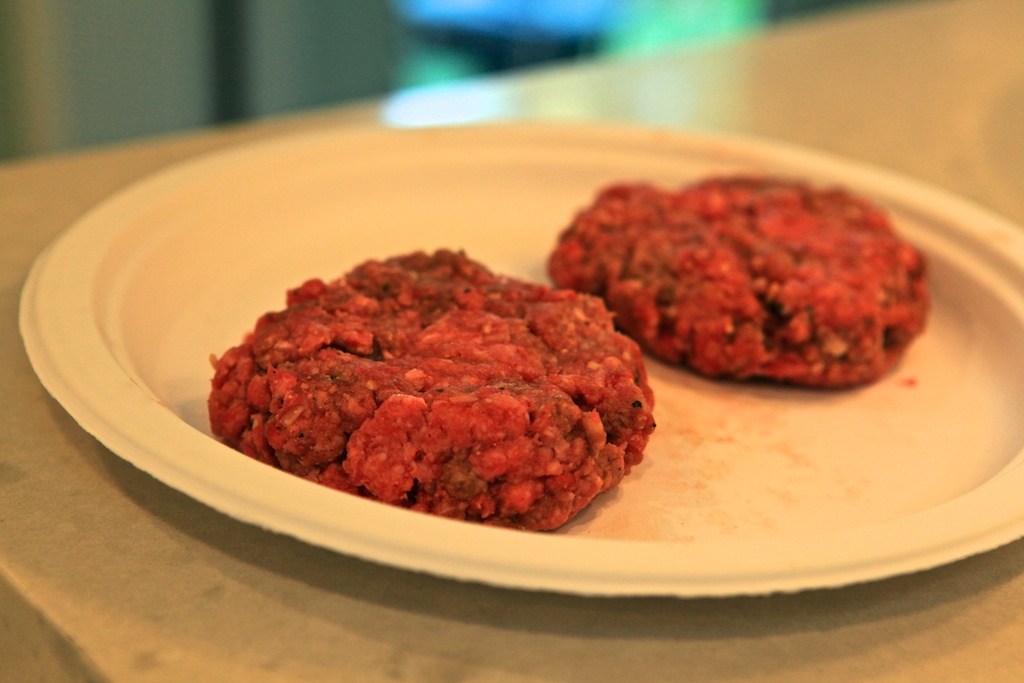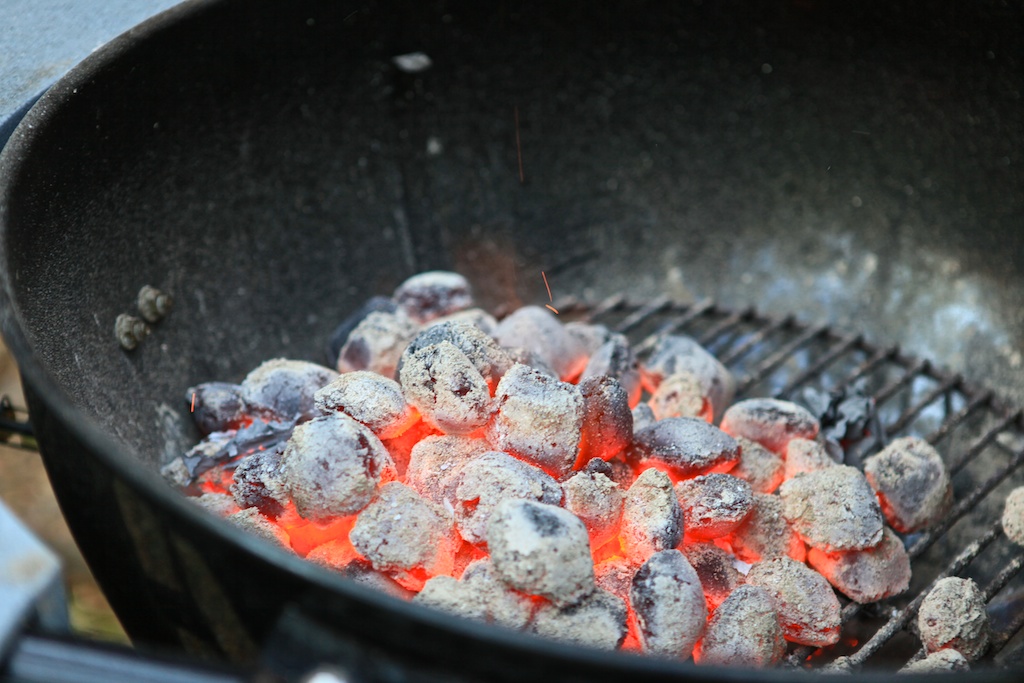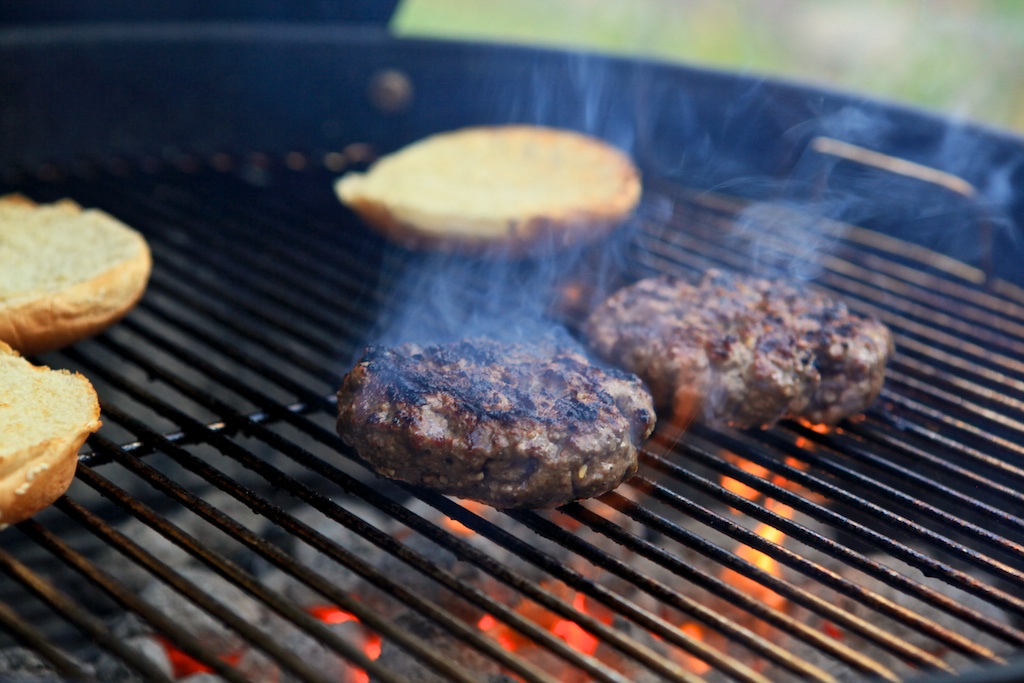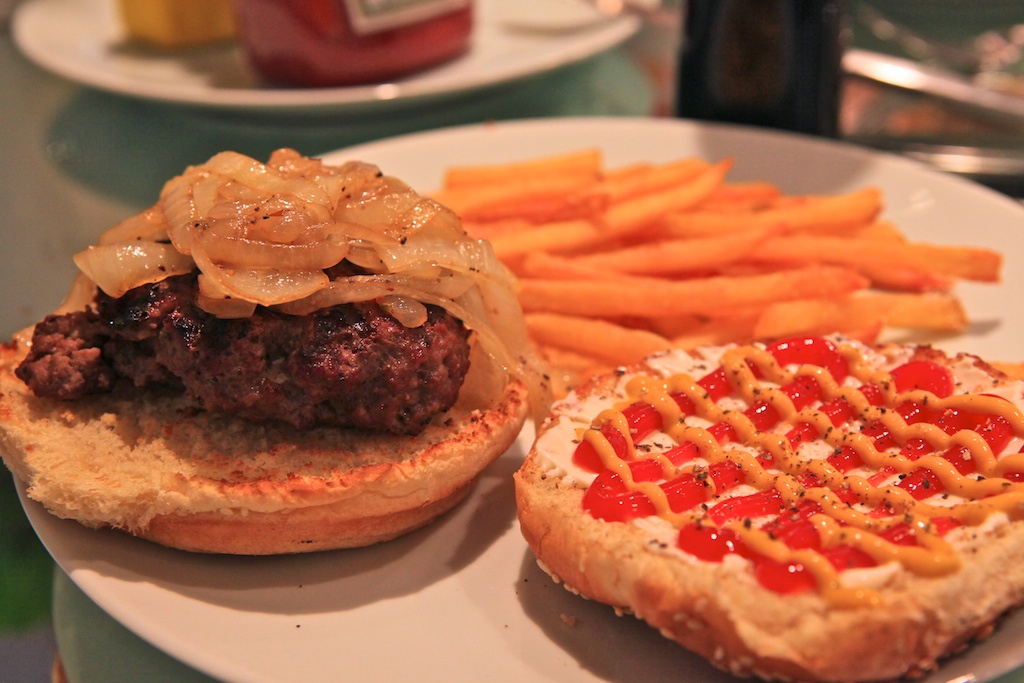September 10, 2009
Can there be Yakety without Sax?
(Great. Now I have Yakety Sax in my head, and I bet you do, too. Sorry.)
Here’s the latest on the Trombone Concerto. I’ve finished writing the short score through the end of the second movement. The piece will be three movements total, roughly 16-18 minutes long, and I have two movements at roughly 12 minutes so far, so I think we’re in good shape. The piece is due in early November, and I am still just working on the short score (meaning a reduced score without all of the instruments mapped out, with a lot of generic piano and clarinet sounds where other instruments will eventually be). As I’ve been working on this slow movement, though, I’ve been giving a lot more thought to the instrumentation for the complete piece.
When I first agreed to write the piece (I say “agreed” as if there was every any question, which there wasn’t), I had the idea to score it not for standard full band, but for orchestral winds, brass, and percussion. It would basically be a piece for “band,” in that there would be no strings (except double bass), but there wouldn’t be any saxes or euphonium. Without those instruments, the piece could be programmed not just by professional and college bands, but also by orchestras.
Admittedly, this is probably just a pipe dream. As I’ve written before, it’s not exactly easy to get a performance with an orchestra. Redline Tango for orchestra: I think we’ll hit the 12th professional orchestra performance this season (thank you, Grand Rapids Symphony). Redline Tango for band: well over 200 performances by now.
Still, the thinking here is three-fold. First, I’ve written something like 10 back-to-back pieces for band, and the scoring is always the same, give or take the number of percussionists. I think it will be nice to work with a different color this time, and I’ve become pretty dependent on the sax section, so it’s good to mix things up. Second, the euphonium really sounds best in the same range where a tenor trombone sounds especially sweet, and I didn’t want to have any potential balance issues with that, so dropping the euphonium makes sense.
A huge reason to write the piece for “orchestral winds,” though, is the soloist. The person who will premiere the piece is Joseph Alessi, principal trombone for the New York Philharmonic. Joe solos and records with colleges and orchestras all over the world. If he has the opportunity to solo with an ensemble, whether it be a band or orchestra, I’d like this piece to be in the running when he (or any other soloist) considers repertoire.
I took an informal poll about the scoring over on Facebook the other day, and there was an awful lot of feedback. (At last count, there were over 30 responses — far more than any blog entry receives here on the site itself.) In a sort of fascinatingly meta moment, writer (and blogger) Pierre Ruhe blogged a good portion of the Facebook conversation — which I encourage you to read, especially if you missed the Facebook thread. It’s wild to have something semi-private like a Facebook thread (viewable only by my “friends”) blogged as a completely public conversation, but it’s an interesting window into the process.
If you read Pierre’s summary, you’ll see that by the end of the thread, I’d decided to commit to scoring the piece for orchestral winds, brass, and percussion. There are some real challenges with this, primarily in the slow movement, where I’d normally depend on the saxes to provide the most string-like sound available in the band. (I just love writing chords for the full sax section, sustained, and extremely quiet. Nothing else in the band blends like that.) But, as I also said on Facebook, I emailed one of the “big” orchestra conductors in the US, and told this person about the project, and that I was considering scoring it for orchestral winds — like the Stravinsky Concerto for Piano and Wind Instruments. The response back, within minutes, was one of encouragement, expressing interest in the piece if that were the scoring.
The next step is to set up the score and actually start orchestrating what I’ve written. I need to figure out how many clarinets I can really safely have with an orchestra, and what types of clarinets. Again, the biggest issue is this slow movement. It’s tough to beat a contrabass clarinet in its bottom octave, slow and quiet. Yes, I’ll have a double bass, but I need that contrabass clarinet. How realistic is it to ask for one? Some college bands don’t even have one. Corigliano’s Symphony Number 1 has a contrabass clarinet part, but it’s optional. He cues it in tuba, but that wouldn’t sound nearly as great. Maybe that’s the solution — write a contrabass clarinet part, and just cue it elsewhere.
And how large of a wind section can I have? The Corigilano has 3 flutes, piccolo/flute 4, 3 oboes, English horn, 3 Bb clarinets, bass clarinet (doubling contrabass), 3 bassoons and contrabassoon. He even writes 4 trombone parts — 2 tenor, 2 bass — 6 (!) horn parts, 5 trumpet parts, and 2 tuba parts. Good lord, it’s a friggin’ concert band! Can I get away with scoring this large and ever hope for an orchestra to touch it? No. I don’t have an Oscar, a Pulitzer, and multiple Grammy awards, and my piece will be 18 minutes, not 45. Unless they’re putting Corigliano on the second half, an orchestra would have to hire extra personnel in order to play the concerto with scoring like that, and that would never happen. The trick is to find the happy medium, where the scoring is as large as I can find, but still with a realistic number of players.
If you’re curious to see a few pages of the short score, here is the PDF. It’s ugly, of course, but those are the notes. You’ll see a lot of things that are entirely for MIDI playback, like “patch 1,” “rip patch” (the patch that makes the trombone rip upwards into the next note), and a whole lot of measures where there appear to be as many as 4 notes in unison in the trombone line. (I do that to make the sound fuller in the MIDI.) Also, note that the tempo is a completely over-the-top quarter=196. You’ll see that the solo part is pretty high, with lots of high C’s. The slow movement manages to go up to a high D, sustained, and quiet. Ouch.
Now I need to figure out the instrumentation — that is, the specific number of wind and brass players. Feel free to weigh in here, or over on Facebook, where I’ll post the link for this entry…
Oh — pictures! I didn’t post a picture. In lieu of that, I’ll link. Last night on Top Chef: Las Vegas, the chefs cooked at Joel Robuchon’s restaurant in Vegas. AEJ and I had our wedding dinner there. It was the best meal ever, and I took a zillion pictures. If you’ve never seen this blog entry, check out the best food p*rn ever.
September 2, 2009
We’re Gonna Need A Bigger Garage
I’ve been lax about blogging once again because once again, there’s not a whole lot to post. Things that pass for acceptable on my Facebook status (“John Mackey tried to convince somebody to go out for frozen yogurt, but SOMEBODY would rather make baritone sax reeds”) doesn’t quite warrant a full blog entry. (No offense, Ms. Liz Love.)
The fact is that every day right now consists of getting up at 8:15, going for a run (it’s a relief that it’s in the low 70’s every morning now), then working on this Trombone Concerto until lunch. We have lunch, then I return to attempting to write some music until dinner.
It is slow, slow going. I’ve been working for a little over three weeks pretty constantly, and I only have six minutes of music so far. What’s there doesn’t really get much longer every day, it just gets (slightly) better. I listen to it, fix a few notes, listen again, fix a few more notes. I had one sort-of breakthrough on Saturday when I decided to add a djembe to the piece. It made a huge difference. I wouldn’t say it made it easier to write a lot of new material, but it took what was already there from “this’ll be fine” to “okay, that’s kind of awesome now.” Adding the djembe was similar to how I felt when I had the idea to add a hi-hat to Redline Tango. The addition of a single percussion instrument can completely transform the flavor of a piece.
When I’m not staring at Finale, I spend way too much time playing on the Internets. The other day, I visited a drum corps website and saw that a drum corps was going to use “Redline Tango” in their show. I’d never heard of the corps, but I knew they hadn’t licensed the piece, so emailed the person who’d posted the show announcement and asked how I could find this drum corps — you know, to, uh, “thank them.” (As I’ve written before, catching an unlicensed use of my music can be very… rewarding.) So the guy emails me back and tells me that this corps — The Avengers — doesn’t actually exist. It’s a fantasy drum corps. Who knew that not only is there fantasy baseball, but there’s fantasy drum corps? And that a fantasy corps was going to use my piece in their fantasy show? This kind of made my day. If only there were a fantasy license fee.
Last week, I took delivery of an entire pallet of “Undertow” scores and full sets. 500 sets and 500 scores, or as the trucking company said when they contacted me to schedule delivery, “1500 pounds.” That’s 3/4 ton of band music. It really was shipped on a single shipping pallet, via a trucking service, and when they called me, they asked if I had a loading dock. A friggin’ loading dock. “Um, I have a garage…”
Turns out the printing company hadn’t paid for “lift gate/ground delivery,” meaning that if I wanted this 1500 pounds of Undertow in my garage, I was going to have to carry each box off of the bed of the truck, down my driveway, and into my garage. Fortunately, the driver was very nice — and I came equipped with a generous tip ready to go — and he agreed to use his pallet mover to place the entire pallet in my garage. It’s a good thing we only have one car.
In today’s food picture, I give you “Chef Boyardee Pizzascape.” I used to make these all the time when I was a kid — a box of Chef Boyardee pizza crust mix and that unique-tasting Chef Boyardee pizza sauce, topped with “real” ingredients (in this case, black forest ham, red onion, and mozzarella cheese). The combination of delicious and fancy black forest ham plus somewhat trashy Chef Boyardee pizza is like AEJ plus, well, me.
Back to work. I really need to get something done before cocktail hour, followed by dinner. We’re making chive risotto cakes tonight…
View Comments
Comments
Speaking as a fantasy drum corps geek myself, I thank you for not having fantasy licensing. It makes our drum-corps-geek lives much easier. You should try it sometime.
I'm glad you're working hard on the trombone concerto, even if they are small steps. I'm quite excited to hear this piece... especially live next spring with Joe Alessi at U of A. =D
That is a lot of sheet music.
Add comment
August 15, 2009
Burgertime
A few days ago, for reasons I don’t need to get into so as not to alienate even more people, AEJ and I joined the Austin food co-op, Wheatsville. By joining, we’re now “part owners” of this grocery store (probably 1/10,000th), and it means that there’s now more than one John Mackey in Austin who owns a grocery store. It also means that this John Mackey just became even a little more of a pinko commie.
Wheatsville is awesome. AWESOME, I tell you! It would never work as our only grocery store (they don’t sell Fritos or Barefoot Contessa cookie mix — and did I mention they don’t sell Fritos?), but when they stock what we’re looking for, the quality is great, and the prices are totally reasonable. Being a co-op, and being supportive of the whole environmentalist mindset, they buy from local farmers and suppliers as much as possible. We bought an onion that was organic and grown just a few miles from the store, and it was the nicest onion we’ve ever bought. I hate it when onions are all bruised and dented by the time they reach the grocery store, but if they’re just coming a few miles, they do much better. We also bought organic free range eggs, also raised on a fully sustainable farm here in Austin — 6 miles from the co-op. The chickens at this farm never see cages, and they only eat what grows in the field. The result is a crazy delicious egg, and it’s really not much more expensive than standard eggs, since they’re being sold by a non-profit co-op.
Not everything is locally raised, of course. Our best discovery at Wheatsville was the Niman Ranch Beef. This beef is raised on sustainable farms and the cows are given no antibiotics (unless they get sick), no hormones, grass fed, and, compared to most beef ranches, is relatively humane. (Reportedly, “Farmers are asked to accompany cattle to the slaughterhouse so that the animals are not unduly stressed, and cattle that appear to be under stress are pulled from line until they can be calmed.”) Hippy-dippy? Yes, but I’m all for it. I’m never going to stop eating meat (me man, me like meat), but I feel a little better knowing the cows are raised and slaughtered as humanely as possible.
So we had Niman Ranch beef, and we had this damn fine onion. We considered making the best sloppy joes ever, but opted to make burgers instead so we could really taste the meat.
We’re old school when we cook out. It’s charcoal all the way.
The coals are ready!
Yeah, that’s gonna be good.
AEJ caramelized the onion, following Ina Garten’s recipe. (Sherry wine vinegar! Who would have thought?)
This was the juiciest beef we’ve ever grilled. If I slid the patty even a little, the juices poured into the fire and nearly caused me to nearly lose my eyebrows.
The burger was soooo juicy, and tasted really beefy. It was an awesome dinner. (And no, not everything is homemade. Those fries are Ore-Ida “Fast Food” fries.)
And now, back to the co-op. There’s probably a petition or something we can sign there. Pinkos unite!
View Comments
Comments
Them burgers look tasty, John. And it looks as though you can tell Other John Mackey that while you couldn't beat his prices, you finally beat his meat.
Hardwood charcoal...no little compressed bricks of chemicals. Seriously. Hardwood charcoal. It just tastes better.
Will - We have hardwood charcoal, too. I tried these briquettes because I was having a tough time getting the hardwood to stay lit, even with the chimney starter, but I had the same problem with the briquettes. (I think the charcoal, stored outside, might just get too damn or something.)
I do think the briquettes, once they're burning, burn hotter than the hardwood, but I do like the hardwood better.
John your photos are making me hunger and I do not even eat beef.
I use your photos on the website for my photo class.
John - those look amazing. I just grilled some burgers the other day and they were great... but didn't look as good as this. (love the onions, by the way) :) I use the ol' George Foreman grill, cuz we don't have any space for an outside grill here. I wish I had just a little patio to store one though.
Those burgers look fantastic!
And I love that you're the only one who has anything nice to say about those Barefoot Contessa mixes on Amazon.
View Comments
Comments
ColeHanson says
The sax part in the Soprano Sax concerto is tremendous, and really great at the end of the slow movement. I'm skeptical that many major orchestras will want to program a new composer anyways, regardless of the level of the composition, but of course, college bands reel in new pieces every concert season. I think it will be performed mostly by that medium regardless, so why leave out the best section of the band for 125 college band performances in order to obtain 25 orchestra performances???
EK says
John, I really think this is a great opportunity to do something special. You mentioned the Stravinsky concerto for piano and winds, and I think that is a great place to look. Speaking of Stravinksy, the octect may also yield some insight. A total of eight players, two of which are trombones, and yet they never seem to stick out of place or overbalance the rest of the ensemble.
Now Im not suggesting that you need to write for an ensemble that small, but in light of your concerns about writing for too many clarinets, flutes etc.... it just shows that you could orchestrate this for a smaller ensemble, again similar to the Strauss Eb serenade or Bb suite, and still accomplish your goals.
Your discussion of the second movement of the concerto got me thinking. I just finished looking at the score, and listening, to Mahler's Ruckert Lieder. "Um Mitternacht" is written completely for winds alone, no strings. The entire string section is tacet for that movement, and it sounds great. If you get a chance take a look, or if you dont have the score, its readily available on the International Score Library Project database online. (I tried to buy the dover score through Amazon five times and never was able to get an actual copy, for various reasons grrr) However, Mahler's treatment of a lyrical voice with orchestral winds is very compelling in my opinion, and it doesnt use all sorts of specialty instruments.
I think, yes, the saxophone family adds a whole layer of sound and dimension, but, that doesnt mean that orchestral winds alone cannot have an equally satisfying quality that is different but compelling at the same time. Its the difference that will give the work its unique and challenging attractiveness. And I promise anyone who begs to differ that the premiere college wind ensembles will still program the work. Lets not forget why Fennell created the wind ensemble in the first place... so composers werent handcuffed to a specific instrumentation.... variety!
These are just my humble thoughts. I think its great that you have opened up to outside thoughts and suggestions. Maybe you will start a trend that other composers will follow?
John says
EK -
Thanks a lot for telling me about that Mahler piece. I didn't know it at all, and it's BEAUTIFUL. The scoring is perfect (not surprisingly), and it was especially helpful that it's literally a song, so there was a solo male voice with that accompaniment -- not unlike how I'm imagining the trombone part.
And you've brought up a point that I hadn't really been considering, that that's that larger doesn't necessarily mean better. I can get a lot more clarity the smaller the ensemble, so maybe I should start by scoring a little lighter and then see what I absolutely need to add. Would I ever need 6 horns, or would 4 do?
Cole -
Yes, the piece will be performed by college bands 95%+ of the time, but if I ended up with even a single professional performance, that would be something worth pursuing. And if I can get this instrumentation worked out, I think it'll have a unique sound. And it's not like I've been ignoring the sax section leading up to this. ;)
Esmail says
That may have been a rhetorical question, but 4 horns is likely enough, at least it is in the Mahler and Strauss, and even the Dvorak serenade, which is a great wind piece as well for 13 instruments I believe... too lazy to pull out my score at the moment. I realy do think economy works best when orchestrated well, and of course when good players are present. Writing a lighter, transparent texture and then adding more where you feel the need I completely agree with: more isnt always better... only when it serves a specific musical purpose.
JM says
As a sax player, it is awesome to get to play new works. I wish that scoring saxophone in orchestra will be standard some day (maybe in 200 years). Because you sacrifice the sax section to get a few extra orchestral performances, you get exposure outside of college wind band programs who already play his music on a consistent basis. One of the ideas behind the instrumentation is to increase exposure. If he has already heard of programming interest from a major orchestra director, that is awesome and probably what's best. Other major orchestras and smaller orchestras will take notice of the programming, the association with Joe Alessi, and will want to copy and/or commission.
Daniel Wolf says
Absolutely keep the scoring you think the concerto requires, but, given the fact that most college ensembles are enrolled courses, why not take advantage of the otherwise idle saxes and euphonium, and write a companion chamber work that they can rehearse while the rest of the band is doing the concerto?
Jeremy Beck says
I think the thing to consider when you're thinking about how many horns you need is how many trumpets you're using: if you're using more than the standard 2-3 orchestral trumpets, then by all means you need more than 4 horns for balance. But if you've got 3 trumpets, then 4 horns works just fine.
(If you REALLY want a 5th horn, though, most orchestras have a 5th horn player contracted to play "assistant principal," and take all the 1st parts that aren't solos so the Real Principal can rest as much as possible and save her chops.)
What are you thinking of doing with the orchestral trombone section? I'd LOVE to do antiphonal effects between the solo trombone and the section trombones, but I'm a freak like that :)
Add comment